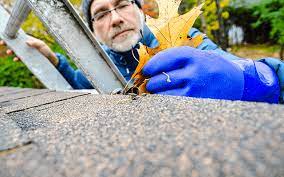Introduction
As the leaves start to change and the temperature begins to drop, it’s time to start thinking about fall home maintenance. While it may not be the most glamorous aspect of homeownership, taking care of essential tasks now can save you time, money, and headaches down the road.
Inspecting the Exterior: Roof, Gutters, and Siding
Checking for roof damage
Inspect your roof for any signs of damage, such as missing or damaged shingles, sagging areas, or signs of water damage. Addressing issues now can prevent leaks and water damage during the winter months.
Cleaning and inspecting gutters
Clean out gutters and downspouts to remove leaves, debris, and other obstructions. Clogged gutters can lead to water damage and ice dams, so it’s essential to keep them clear and free-flowing.
Examining siding for cracks or gaps
Inspect the exterior of your home for cracks, gaps, or holes in the siding. Seal any openings with caulk or weatherproofing to prevent drafts and water infiltration.
Prepping for Winter: Windows, Doors, and Insulation
Sealing gaps and cracks around windows and doors
Check for drafts around windows and doors and seal any gaps or cracks with weatherstripping or caulk. Proper insulation will help keep your home warm and energy-efficient during the colder months.
Checking insulation in attics and crawl spaces
Inspect the insulation in attics, crawl spaces, and basements to ensure it’s in good condition and adequately covering all areas. Adding or replacing insulation can improve energy efficiency and keep heating costs down.
Heating System and Fireplace Maintenance
Scheduling a professional HVAC inspection
Schedule a professional inspection of your heating system to ensure it’s in good working order. Clean or replace filters, check for leaks or damage, and make any necessary repairs or adjustments.
Cleaning and inspecting the fireplace and chimney
If you have a fireplace, clean the chimney and flue to remove creosote buildup and ensure proper ventilation. Check for any cracks or damage to the chimney and repair as needed to prevent fire hazards.
Outdoor Spaces: Patio, Deck, and Landscaping
Storing outdoor furniture and accessories
Clean and store outdoor furniture, cushions, and accessories to protect them from the elements. Cover or store grills, patio heaters, and other outdoor appliances to prevent damage and corrosion.
Trimming trees and shrubs
Trim trees and shrubs away from the house to prevent damage from falling branches or debris during storms. Prune overgrown branches and remove dead or diseased trees to maintain a safe and healthy landscape.
Safety Checks: Smoke Detectors and Carbon Monoxide Alarms
Testing smoke detectors and carbon monoxide alarms
Test smoke detectors and carbon monoxide alarms to ensure they’re working correctly. Replace batteries if necessary and replace any detectors that are old or malfunctioning to ensure your family’s safety.
Replacing batteries if necessary
Don’t forget to replace the batteries in your smoke detectors and carbon monoxide alarms regularly, typically every six months. This simple task can save lives in the event of a fire or carbon monoxide leak.
Indoor Cleaning and Organization
Deep cleaning carpets and rugs
Give your carpets and rugs a deep cleaning to remove dirt, dust, and allergens that have accumulated over the summer months. Consider hiring a professional carpet cleaning service for a thorough and effective clean.
Decluttering and organizing closets and storage areas
Take advantage of the change in seasons to declutter and organize closets, cabinets, and storage areas. Donate or discard items you no longer need or use, and create a system for keeping things tidy and organized throughout the fall and winter.
Preparing for Emergencies: Supplies and Plans
Stocking up on emergency supplies
Prepare for emergencies by stocking up on essential supplies such as bottled water, non-perishable food, flashlights, batteries, and first aid supplies. Store these items in a designated emergency kit that’s easily accessible in case of power outages or other emergencies.
Creating a family emergency plan
Develop a family emergency plan that outlines what to do in various scenarios, such as severe weather, fires, or medical emergencies. Assign roles and responsibilities to each family member and practice drills to ensure everyone knows what to do in an emergency.
Conclusion
Fall home maintenance may not be the most glamorous task, but it’s essential for keeping your home safe, comfortable, and energy-efficient throughout the colder months. By tackling these essential tasks now, you can avoid costly repairs and enjoy a cozy and worry-free winter season.

